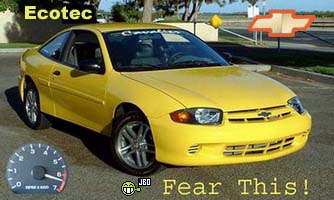On every bottle of motor oil there is a seal that gives you three pieces of information:
-The API service rating
-The viscosity grade
-"Energy Conserving" indicator (it either is or it isn't)
The API service rating is a two-letter rating that tells you the type of engine the oil is meant for (gasoline or diesel) and the quality level.
The viscosity grade (for example, 5W-30) tells you the oil's thickness, or viscosity. A thin oil has a lower number and flows more easily, while thick oils have a higher number and are more resistant to flow. Water has a very low viscosity -- it is thin and flows easily. Honey has a very high viscosity -- it is thick and gooey.
The standard unit used to measure viscosity is the centistoke (cSt).
Viscosity is ordinarily expressed in terms of the time required for a standard quantity of the fluid at a certain temperature to flow through a standard orifice. The higher the value, the more viscous the fluid. Since viscosity varies inversely with temperature, its value is meaningless unless accompanied by the temperature at which it is determined. With petroleum oils, viscosity is now commonly reported in centistokes (cSt), measured at either 40°C or 100 °C.
Multi-weight oils (such as 10W-30) are a new invention made possible by adding polymers to oil. The polymers allow the oil to have different weights at different temperatures. The first number indicates the viscosity of the oil at a cold temperature, while the second number indicates the viscosity at operating temperature.
At cold temperatures, the polymers are coiled up and allow the oil to flow as their low numbers indicate. As the oil warms up, the polymers begin to unwind into long chains that prevent the oil from thinning as much as it normally would. The result is that at 100 degrees C, the oil has thinned only as much as the higher viscosity number indicates. Another way of looking at multi-vis oils is to think of a 20W-50 as a 20 weight oil that will not thin more than a 50 weight would when hot.
Send my an email if you come up with any questions.

New Picture comming this summer.
Good info. Along those lines, there's something else about oil these days. Until about 3 years ago, all oils contained Zinc Phosphates and Magnesium alloys. Those additons to oils made the older cams & lifters live longer. With lots of engines these days using roller valve train parts, that older combo of additions isn't nearly as critical. Older motors such as the old 2.2 still have the "flat Tappets" and they need those additives to keep from ruining the cam/lifters. The good old EPA, auto company's and oil company's got together to meet the newer emissions standards and one way the oil company's helped was reducing or eliminating these older additives. On newer cars, that's not a problem as they were designed to not need it anyway. On older cars, it's a real problem. If your car is older and still has flat tappet valve lifters, there's a couple of things you can do to return to what your motor needs. (1) is to buy/use oil made for Diesel engines. (2) use something like the GM oil additive for severe conditions.
What happens is that the Zinc & other additives creates a film over the camshaft, and that protects the older flat tappet lifters. If it's not present, a cam failure / lifter failure will occur and flat camshaft lobes will result. It's become a BIG issue with the people restoring older cars, and lots of racers that build 350's..etc the "old" way. Comp Cams, Crane Cams and GMPP cams have all had lots of problems in this area in the past 3 years. Mainly due to the oil's reduced additive pack.
Don
That is so true!

New Picture comming this summer.
I did not want to add that in since all I was talking about was weight of oil.

New Picture comming this summer.
I thought it might be useful to people who have older models. The additive pack does not change the weight(s) in any way.
Don
Another trick to use is 15w50 Aeroshell. The oil is designed for older aircraft engines. When I built my motor, I broke it in with w65 Mineral Aeroshell oil. After 50 hrs I changed the oil, and now I use 3 qts Valvoline 10w40 and 1.5 qts Aeroshell 15w50. I had minscule amounts of metal powder on drainplug and inside filter during brake in period. I check the filter everyother oil change and I have no metal in filter or on plug now. If you are interested in the Aeroshell, go to your local General Aviation airport and go to the pilot shop and they will or should have the oil for sale there. The 15w50 is compatible with all oils by the way except synthetic.
Rotella 15w 40 is what I use in my motorcycle and beater. Very good diesel oil.





